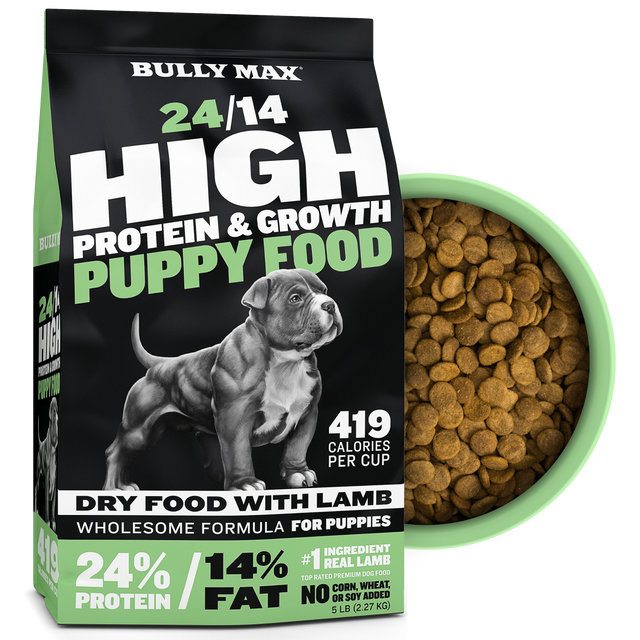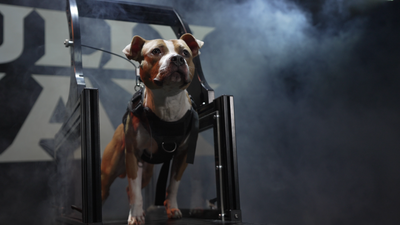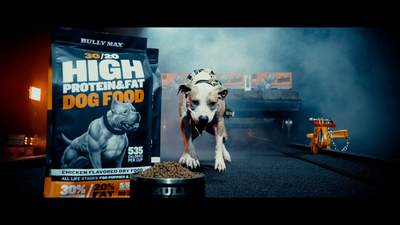Is Food Coloring Safe for Dogs?
If you’ve ever opened a bag of dog food to reveal colored bits of kibble, it may have made you wonder if artificial food coloring is safe for dogs. Is it harmless, or something you ought to avoid? Here’s our two cents on the matter.
We’ll start by sharing two relevant facts that you probably need to know.
First, the food manufacturing process removes all color from food.
Your dog goof may contain beef, broccoli, and sweet potatoes, but that doesn’t mean your kibble is going to be colored red, green, and orange. That’s because the manufacturing process removes those colors from food. So, if your dog food has bits of green kibble meant to represent the vegetables inside, realize that the green color is added after the fact—after processing—via food coloring.
Second, dogs can’t see the full spectrum of colors.
Your dog’s eyes have only two cones, which means their ability to perceive colors is limited. They can’t see red or green, and they have a limited ability to discern subtle changes in a color’s brightness. This means that the color of your dog food doesn’t matter at all to your dog. These colors are added purely for the benefit of you, the owner.
(Related: 5 common feeding mistakes dog owners make.)
That might make you wonder if all those artificial colors are really necessary, or if they simply add unhealthy ingredients to your dog’s food.
The History of Food Coloring
Here’s an interesting bit of trivia: did you know that food coloring was first used to hide the fact that food might be spoiled, damaged, or otherwise less than fresh? To make matters worse, many of these early food colorings contained toxic chemicals like lead, arsenic, and mercury. As you might imagine, this practice was banned by the FDA (in 1906).
So food manufacturers started using different food coloring products, these ones made from coal-tar dyes. If that doesn’t sound very appealing, you might not be surprised to learn that these, too, were eventually banned by the Color Additives Amendments of 1960 for safety reasons.
The State of Food Coloring Today
Today, the FDA keeps a close eye on the food coloring additives used in food for both humans and animals. There are less than ten certified, manmade food coloring additives (although some uncertified food colorings are still used). Some manufacturers also use natural pigments that come from food or plants, although these are also monitored by the FDA.
So, Is Artificial Food Coloring Safe for Dogs or Not?
The answer is a little more nuanced than a simple “yes/no.” Here are some considerations to keep in mind:
There’s some evidence that food coloring may be linked to cancer, allergies, and hyperactivity in humans. However, these apply to the non-certified food dyes, and not the food coloring that is certified by the FDA. And we can’t say for sure whether the same thing is true of animals or not.
There’s very little research on the effect of food coloring on dogs. This means we don’t really know for certain if artificial food coloring is really safe for dogs—or not.
Good News: Manufacturers Are Moving Away from Artificial Food Coloring
Today’s consumers are more aware and educated than ever, and food coloring is one of the top 3 things that most people prefer to avoid in their products. As a result, many food producers have started moving toward the use of more natural food coloring agents—which are probably liable to be safer, since they come from safe foods in the first place.
So what should you, as a responsible pet owner, do?
All the evidence points to modern food coloring being quite safe for dogs. However, the matter has not been studied extensively, so no one can say for sure. Your best bet is to feed your dog the highest-quality dog food you can find—ideally, one without artificial dyes.
Our 30/20 High-Performance Dog Food is a great example of healthy dog food that doesn’t mess around with unnecessary food colors. Instead, it’s filled with healthy, natural ingredients that will help keep your dog feeling healthy and happy.








